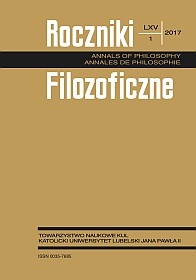Should the Model of the Universe Be Structurally Stable?
Abstract
We show that the modern cosmology appears to be the case of effective modeling similar to the Standard Model of particle physics (SM). In the study of the universe an important role is played by the physical theory from which the Standard Cosmological Model, allowing us to explain the properties of contemporary universe and its history, is derived. The Standard Cosmological Model includes the model of universe evolution (based on General Relativity) and SM. This paper discusses the scheme of the accelerated expansion of the universe in terms of today's dark energy and dark matter. We will examine the methodological features of such an explanation in the Standard Cosmological Model. We elaborate oscillating models of the Universe from the point of view of their structural stability. We show that this conceptual framework can be useful in describing relations between cosmological models LCDM (Lamda – Cold – Dark Matter Model) and CMD where epistemological emergence of specific properties is presented in terms of bifurcation and instability.
References
Alexander, Samuel. Space, Time, and Deity. London: Macmillan, 1920.
Andronov, A.A., E.A. Leontovich, I.I. Gordon, i A.G. Maier. Теория бифуркаций динамических систем на плоскости [Teoriia bifurkatsiǐ dinamicheskikh sistem na ploskosti]. Москва: Наука [Moskwa: Nauka], 1967.
Andronov, A.A., i L.S. Pontryagin. „Systèmes grossiers”. Doklady Akademii Nauk SSSR 14 (1937): 247–250.
Arnold, V.I. Дополнительные главы теории обыкновенных дифференциальных уравнений [Dopolnitelnyje glawy teorii obyknowiennych diferentialnych uravneniǐ]. Москва: Наука [Moskwa: Nauka], 1978.
Arnold, W.I. Różniczkowe równania zwyczajne. Warszawa: PWN, 1975.
Bishop, Robert C., i Harald Atmanspacher. „Contextual emergence in the description of properties”. Foundations of Physics 36 (2006), 12: 1757–1777. DOI: 10.1007/s10701-006-9082-8.
Broad, C.D. The Minds and Its Place in Nature. London: Routledge and Kegan Paul, 1925.
Hawking, Stephen W., i George F.R. Ellis. The Large Scale Structure of Spacetime. Cambridge: Cambridge University Press, 1973.
Humphreys, Paul. „How properties emerge”. Philosophy of Science 64 (1997): 1–17. DOI: 10.1086/392533
Kim, Jaegwon. „Making sense of emergence”. Philosophical Studies 95 (1999): 3–36. DOI: 10.1023/A:1004563122154.
Kokarev, Sergey S. „Structural instability of Friedmann-Robertson-Walker cosmological models”. General Relativity and Quantum Cosmology 41 (2009), 8: 1777-1794. DOI: 10.1007/s10714-008-0748-8
Larena, Julien, Jean-Michel Alimi, Thomas Buchert, Martin Kunz, Pier-Stefano Corasaniti, „Testing backreaction effects with observations”. Physical Review D 79.8 (2009): 083011. DOI: 10.1103/PhysRevD.79.083011
Morgan, Conwy. Emergent Evolution. New York: Holt, 1923.
Nagel, Ernest. The Structure of science. New York: Hackett Publishing Company Inc, 1961.
Palmquist, Stephen. „Emergence, evolution, and the geometry of logic: Causal leaps and the myth of historical development”. Foundations of Science 12 (2007): 9–37. DOI: 10.1007/s10699-006-0004-1.
Perko, Lawrence. Differential Equations and Dynamical Systems. New York: Springer-Verlag, 1991.
Riess, Adam G., et al. „Observational evidence from supernovae for an accelerating universe and a cosmological constant”. The Astronomical Journal 116 (1998), 3: 1009–1038. DOI: 10.1086/300499.
Silberstein, Michael, i John McGeever. „The search for ontological emergence”. The Philosophical Quarterly 49 (1999), 195: 182–200. DOI: 10.1111/1467-9213.00136.
Spergel, David N., et al. „First year Wilkinson Microwave Anisotropy Probe (WMAP) observations: Determination of cosmological parameters”. The Astrophysical Journal. Supplement Series 148 (2003): 175–194. DOI: 10.1086/377226
Szydłowski, Marek. „Filozoficzne aspekty pojęcia stabilności”. Analecta Cracoviensia 15 (1983): 13–24.
Szydłowski, Marek. „Cosmological zoo: Accelerating models with dark energy”. Journal of Cosmology and Astroparticle Physics 0709 (2007): 007. DOI: 10.1088/1475-7516/ 2007/09/007.
Szydłowski, Marek. „Ontologiczne i epistemologicze aspekty pojęcia modelu kosmologicznego”. Filozofia i Nauka. Studia filozoficzne i interdyscyplinarne 2 (2014): 277–292.
Szydłowski, Marek, Michał Heller i Zdzisław Gołda. „Structural stability properties of Friedman cosmology”. General Relativity and Gravitation 16 (1984), 9: 877–890. DOI: 10.1007/BF00762940.
Szydłowski, Marek, Aleksandra Kurek i Adam Krawiec. „Top ten accelerating cosmological models”. Physics Letters B642 (2006): 171–178. DOI: 10.1016/j.physletb.2006. 09.052.
Szydłowski, Marek, i Paweł Tambor. „Dynamical Emergence of FRW Cosmological Models”. W: Proceedings of the 8th Mathematical Physics Meeting : Summer School and Conference on Modern Mathematical Physics: August 24-31, 2014, Belgrade, Serbia, red. Branko Dragović i Igor Salom, 177–190. Belgrade: Institute of Physics, 2015.
Trotta, Roberto. „Bayes in the sky: Bayesian inference and model selection in cosmology”. Contemporary Physics, 49 (2008): 71–104. DOI: 10.1080/00107510802066753.
Uzan, Jean-Philippe. „The big-bang theory: construction, evolution and status”. Séminaire Poincaré 20 (2015): 1–69.
Copyright (c) 2017 Roczniki Filozoficzne

This work is licensed under a Creative Commons Attribution-NonCommercial-NoDerivatives 4.0 International License.





